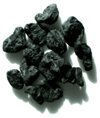1. Yen KY. The illustrated Chinese Materia Medica. Crude and Prepared. 1997. Taipei: SMC Publishing Inc.;59.
2. Yook CS, Moon YH, Lee KS. Korea phytology. 1994. Seoul: Yeolu moonwhasa Publishing Inc.;316.
3. Lee CK, Seo JM. Changes of the constituents in the Rehamanniae Radix Preparata during processing. Journal of the Korean Society of Food Science and Nutrition. 2004. 22:1748–1752.
4. Lau TW, Lam FFY, Lau KM, Chan YW, Lee KM, Sahota DS, Ho YY, Fung KP, Leung PC, Lau CB. Pharmacological investigation on the wound healing effects of Radix Rehmanmiae in an animal model of diabetic foot ulcer. J Ethnopharmacol. 2009. 123:155–162.

5. Kim JO, Lee GD, Kwon JH, Kim KS. Anti-diabetic effects of New Herbal Formula in neonatally streptozotocin-induced diabetic rats. Biol Pharm Bull. 2009. 32:421–426.

6. Park SM, Hong SM, Sung SR, Lee JE, Kwon DY. Extracts of Rhemannia radix, Ginseng radix, and Scutellariae radix improve glucose-stimulated insulin secretion and beta cell proliferation through IRS2 induction. Genes Nutr. 2008. 2:347–351.

7. Sasaki T, Matsy S, Sonae A. Effect of acetic acid concentration on the color reaction in the O-toluidine boric acid method for blood glucose estimation. Rinsho Kagak. 1972. 1:346–353.
8. Joo CN, Koo JH, Lee HB. Study on the hypoglycemic action of the fat soluble fraction of Panax ginseng CA Meyer in streptozotocin induced rats. Korean Journal of Ginseng Science. 1993. 17:13–21.
9. Yokozawa T, Kim HY, Yamabe N. Amelioration of diabetic nephropathy by dried
Rehmanniae Radix (Di Huang) extract. Am J Chin Med. 2004. 32:829–839.

10. Szkudelski T. The mechanism of alloxan and strptozotocin action in B cells of the rat pancrease. Physiol Res. 2001. 50:537–546.
11. Laakso M, Malkki M, Deeb SS. Amino acid subetitutions in hexokinase II among patients with NIDDM. Diabetes. 1995. 44:330–334.

12. Singh J, Kakkar P. Antihyperglycemic and antioxidant effect of Berberis aristatta root extract and its role in regulating carbohydrate metabolism in diabetic rats. J Ethnopharmacol. 2009. 123:22–26.

13. Park MJ, Kang SJ, Kim AJ. Hypoglycemic effect of Angelica gigas Naki extracts in streptozotocin-induced diabetic rats. The Korean Journal of Food and Nutrition. 2009. 22:246–251.
14. Xu Y, Osborne BW, Stanton RC. Diabetes causes inhibition of glucose-6-phosphate dehydrogenase via activation of PKA, which contributes to oxidative stress in rat kidney cortex. Am J Physiol Renal Physiol. 2005. 289:F1040–F1047.

15. Wagle A, Jivral S, Garlock GL, Stapleton SR. Insulin regulation of glucose 6- phosphate dehydregenase gene expression is rapamycin-sensitive and requires phophatidylInositol 3-kinaes. J Biol Chem. 1998. 273:14968–14974.

16. Palsamy P, Subramanian S. Modulatory effects of resveratrol on attenuating the key-enzyme activities of carbohydrate metabolism in streptozotocin-nicotinamide-induced diabetic rats. Chem Biol Interact. 2009. 179:356–362.

17. Niazi GA. Glucose-6-phosphate dehydrogenase deficiency and diabetes mellitus. Int J Hematol. 1991. 54:295–298.
18. Livrea G, Carrozza G, Manasseri L, Muraca U. Concomitant repression by gluten of HMP shunt dehydrogenases, citrate cleavage enzyme and malic enzyme in rat liver and adipose tissue. J Nutr. 1976. 106:335–341.

19. Tong L. Acetyl-coenzyme A carboxylase: crucial metabolic enzyme and attractive target for drug discovery. Cell Mol Life Sci. 2005. 62:1784–1803.

20. Brownsey RW, Boone AN, Elliott JE, Kulpa JE, Lee WM. Regulation of acetyl-CoA carboxylase. Biochem Soc Trans. 2006. 34:223–226.







 PDF
PDF ePub
ePub Citation
Citation Print
Print



 XML Download
XML Download